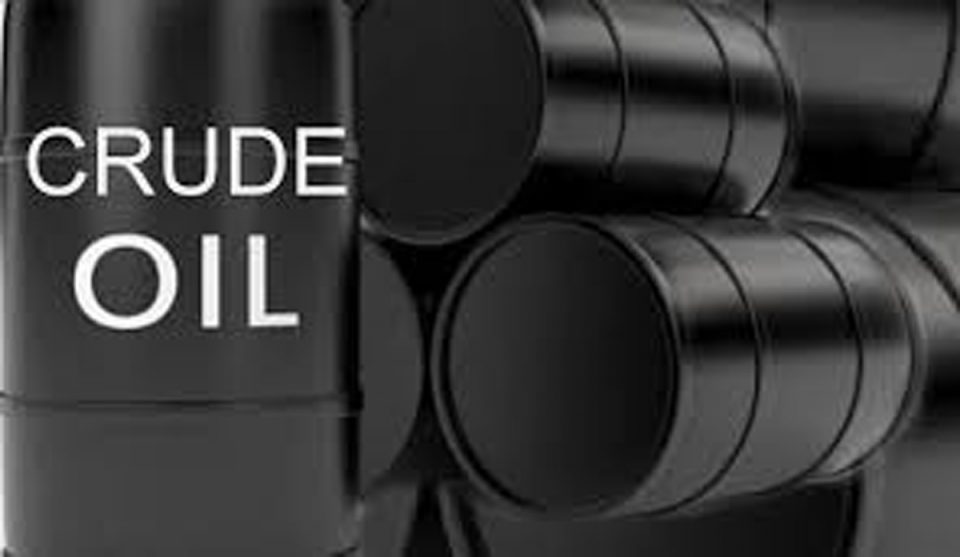Nigeria’s oil production dropped month-on-month, MoM, by 2 per cent to 1.517 million barrels per day, bpd in March 2023, from 1.547 million bpd recorded in the preceding month of February 2023.
The nation’s output had risen by 3.5 percent in February 2023 to 1.54 million bpd, from 1.494 million barrels per day recorded in January, due to an improved battle against oil theft and other factors.
This raised hope for the continued rise in oil output that was expected to be supported by rising prices in the global market.
But in its latest report – Crude oil and Condensate Production 2023 – obtained at the weekend, the Nigerian Upstream Petroleum Regulatory Commission, NUPRC, stated that the output started to drop for the first time in 2023.
The commission did not provide reasons for the development, but noted that the output included 300,000 bpd – 400,000 bpd condensate which Nigeria had the capacity to produce.
This means that Nigeria was not able to meet its 1.69 million bpd target for the 2023 budget which was also benchmarked at $75 per barrel.
Checks at the weekend, indicated that the great setback on the 2023 budget, due to the low output might be reduced as the nation’s Bonny Light hits $85.03 per barrel, yesterday, from $84 per barrel recorded the previous day, indicating $10.03 per barrel in excess of the $75 per barrel budget reference price.
In an interview, the Chief Executive Officer, Centre for the Promotion of Private Enterprise, Dr. Muda Yusuf, attributed the rising oil prices to the opening of the Chinese economy after the coronavirus pandemic.
He said China started to consume less oil during the era of the pandemic that witnessed the shutdown of many industries powered by fossil fuel.
He said: “First, one major factor affecting the high crude prices is China. For some time, China was struggling with the lingering effect of COVID’19.
“But right now, the nation is fully open, and generally, the Chinese economy has a lot of influence on the market, because of the size of the economy and the relationship between their economic activities and the demand for energy. The opening of China is a major factor that drives the market.
“Second, we also have other issues, especially Ukraine and Russia conflict which have not abated, but rather getting worse.
“With all the sanctions imposed, they have an effect on Russia’s crude supply which is been cut down. The war is getting more intense and the sanctions are not to be lifted any time soon. The low supply is also an issue that has led to the high crude prices.”
On sustainability, Yusuf said: “The prices are sustainable. Projections for the remaining part of 2023 have it that prices would hover around $70 and $80 per barrel. The two factors are likely to sustain the price trajectory.
“It will impact positively on the budget. Despite production issues, Nigeria stands to generate more revenue for the execution of the budget. In fact, we might record excess revenue and build our reserves if we are able to increase production. If we improve on our output, we will be a beneficiary of the higher oil price.”
Executive Director of Emmanuel Egbogal Foundation, Professor Wumi Iledare, said oil prices would remain high in the remaining part of 2023.
He said: “Despite the issues and problems staring the market in the face, this is just a blip; the trend in crude oil prices is upward bound.”
OPEC still monitoring market
Checks further indicated that OPEC and its allies, popularly known as OPEC+, were still monitoring the oil market and targeted making new interventions.
Last week, OPEC+ reviewed the crude oil production data for the months of January and February 2023 and noted the overall conformity for participating OPEC and non-OPEC countries of the Declaration of Cooperation, DoC.
A statement obtained said: “The committee reviewed the crude oil production data for the months of January and February 2023 and noted the overall conformity for participating OPEC and non-OPEC countries of the Declaration of Cooperation, DoC.
“The Members of the JMMC reaffirmed their commitment to the DoC which extends to the end of 2023 as decided at the 33rd OPEC and non-OPEC Ministerial Meeting, ONOMM, on October 5, 2022, and urged all participating countries to achieve full conformity and adhere to the compensation mechanism.
“The meeting noted the following voluntary production adjustment announced on April 2, 2023, by Saudi Arabia (500 thousand b/d); Iraq (211 thousand b/d); United Arab Emirates (144 thousand b/d); Kuwait (128 thousand b/d); Kazakhstan (78 thousand b/d); Algeria (48 thousand b/d); Oman (40 thousand b/d); and Gabon (8 thousand b/d) starting May until the end of 2023.
“These will be in addition to the production adjustments decided at the 33rd OPEC and non-OPEC Ministerial Meeting.
“The above will be in addition to the announced voluntary adjustment by the Russian federation of 500 thousand barrels per day until the end of 2023, which will be from the average production levels as assessed by the secondary sources for the month of February 2023.
“Accordingly, this will bring the total additional voluntary production adjustments by the above-mentioned countries to 1.66 million b/d. The Meeting noted that this is a precautionary measure aimed at supporting the stability of the oil market.”


previous post


